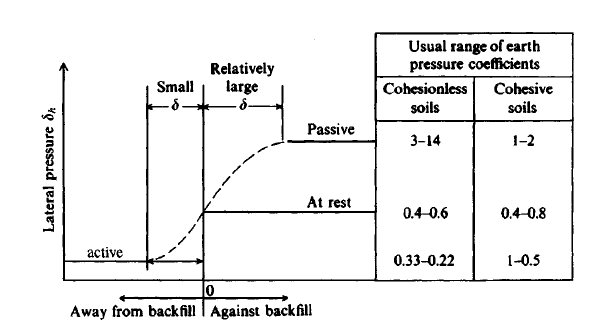Navigation
Install the app
How to install the app on iOS
Follow along with the video below to see how to install our site as a web app on your home screen.
Note: This feature may not be available in some browsers.
More options
Style variation
-
Congratulations MintJulep on being selected by the Eng-Tips community for having the most helpful posts in the forums last week. Way to Go!
You are using an out of date browser. It may not display this or other websites correctly.
You should upgrade or use an alternative browser.
You should upgrade or use an alternative browser.
Checking foundation for shear force
- Thread starter BAGW
- Start date
- Status
- Not open for further replies.
milkshakelake
Structural
For a shallow footing, I wouldn't rely on passive pressure. This thread has some more in-depth discussion about that:
For a retaining wall, yes, you should rely on both.
For a retaining wall, yes, you should rely on both.
- Thread starter
- #3
The case I have is a wind column footing which is burried in soil 42" (bottom of footing) for frost depth requirement. I do not see why passive pressure cannot be used. The dead weight from the column is negligible. If I just rely on friction for sliding resistance, the footing will be huge.
jerseyshore
Structural
I agree with MSL.
The rule of thumb in our office was to use 1 ft less than the total depth of soil for passive and OB calcs. Just to be on the safe side since soil will settle and consolidate and generally the top 12 inches is "unreliable".
Frost depth in our area is 3 ft so that meant for most typical shallow footings we ignored any passive resistance. If it was going to be a lot deeper for a sign or monopole, then we used it.
The rule of thumb in our office was to use 1 ft less than the total depth of soil for passive and OB calcs. Just to be on the safe side since soil will settle and consolidate and generally the top 12 inches is "unreliable".
Frost depth in our area is 3 ft so that meant for most typical shallow footings we ignored any passive resistance. If it was going to be a lot deeper for a sign or monopole, then we used it.
BridgeSmith
Structural
For axial bearing capacity of drilled shaft foundations, which granted is somewhat different, per the spec, we would neglect skin friction within 1 shaft diameter of the end bearing elevation.
Based on that analogous situation, I think it would be reasonable to use the passive pressure against the side face of the footing, but subtract a distance equal to the height of the footing from the width of bottom face of the footing used for sliding resistance based on friction against the soil.
Based on that analogous situation, I think it would be reasonable to use the passive pressure against the side face of the footing, but subtract a distance equal to the height of the footing from the width of bottom face of the footing used for sliding resistance based on friction against the soil.
WesternJeb
Structural
I typically throw a 100 psf passive resistance on footings for slide checks but that is it unless I am desperate. I figure that is somewhere between completely ignoring it and taking full advantage of it. Per the reasons stated above by MSL and Jerseyshore, I don't like to use the full soil wedge for passive resistance with footings, or on the toe side of the retaining wall.
In my opinion engagement of full passive pressure usually requires significant movement into the soil mass, movement would mean that static friction has been overcome so would not use full friction in tandem with full passive. I would try to use full friction in combination with at-rest pressure considering only the soil that I could confidently assume will exist at all times on the passive side.
milkshakelake
Structural
@Celt83 Interesting, I never thought of using at-rest pressure in this way. It makes sense, because it doesn't need displacement to be engaged. But I'm wondering if it's truly applicable because it needs rigidity like a basement wall with zero displacement. I think a foundation would apply, because it's not like a retaining wall.
@milkshakelake:


My read on this has always been that this is the case for at-rest pressure causing the de-stabilizing pressure, for engagement on the passive side of the wall the pressure begins at the at-rest pressure and builds up to the full passive value relative to the movement/rotation into the passive soil mass.milkshakelake said:..But I'm wondering if it's truly applicable because it needs rigidity like a basement wall with zero displacement...
- Status
- Not open for further replies.
Similar threads
- Question
- Replies
- 3
- Views
- 9K
- Locked
- Question
- Replies
- 1
- Views
- 2K
- Replies
- 14
- Views
- 7K
- Replies
- 19
- Views
- 25K
- Replies
- 7
- Views
- 7K
